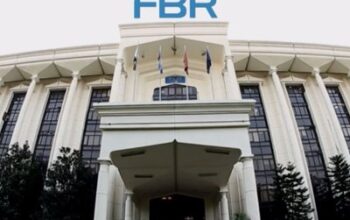By Staff Reporter
ISLAMABAD: Pakistan saw a notable 32 percent drop in violence during the second quarter of 2025, with 615 fatalities and 388 injuries recorded across 273 incidents of terror attacks and counter-terror operations, according to a report released Tuesday by the Centre for Research and Security Studies (CRSS).
The decline, which saw fatalities fall from 900 in the first quarter to 615 in the second, signals promising trends in the country’s long-standing battle against militancy, though emerging hotspots threaten to complicate the gains.
The CRSS report details a shifting security landscape, with traditional trouble zones like Khyber Pakhtunkhwa and Balochistan experiencing significant reductions in unrest, while provinces like Punjab and Azad Jammu and Kashmir report troubling upticks.
Pakistani officials have hailed the overall decrease as evidence of effective counter-terrorism measures, but the spread of violence to new areas has tempered optimism.
The report highlights substantial declines in two of Pakistan’s most volatile regions. Khyber Pakhtunkhwa, where the Tehreek-i-Taliban Pakistan (TTP) remains the primary driver of violence, saw a 32 percent reduction in incidents compared to the first quarter. Balochistan, a parallel epicenter of unrest marked by “a deadly mix of separatist militancy and targeted violence, particularly against security forces,” recorded an even steeper 40 percent drop.
Yet, the gains in these provinces contrast with disturbing trends elsewhere. Punjab, the country’s largest province, witnessed a 162 percent surge in fatalities, rising from 8 in the first quarter to 21 in the second. Though the numbers remain low, the sharp increase has raised concerns about the reach of militancy.
Similarly, Azad Jammu and Kashmir, which reported no deaths in the first quarter, recorded six fatalities in the second. The report notes that Islamabad and Sindh “remained largely unaffected with minimal fluctuations,” offering a rare point of stability.
“The spread of militancy into previously calmer areas is also concerning,” the CRSS report states, pointing to the need for a broader strategy to address the evolving threat.
Despite the overall decline, civilians continue to bear the heaviest burden of violence. The report documents 107 terror attacks targeting civilians, resulting in 249 injuries, far exceeding the 91 attacks on security personnel, which caused 120 injuries, and the 75 operations against outlaws, who sustained just 19 injuries.
The disparity underscores the persistent vulnerability of ordinary Pakistanis caught in the crossfire of militancy and counter-terror efforts. Still, a key metric offers a glimmer of hope: the combined fatalities of civilians and security personnel (282) fell below the 333 deaths recorded among outlaws, amounting to “over 15 percent less losses among civilians and security officials.” This shift reflects a growing toll on militant groups, a trend Pakistani authorities are keen to emphasize.
The report points to a marked increase in the effectiveness of counter-terrorism campaigns. Fatalities among outlawed elements, militants and insurgents, surged to 55 percent of total deaths in the second quarter, up from an average of 35 percent between 2021 and 2024.
The rise suggests that security forces have intensified their operations and scored significant successes against groups like the TTP and Baloch separatists.
In Khyber Pakhtunkhwa, the TTP’s dominance persists, fueling much of the province’s unrest. In Balochistan, the blend of separatist militancy and targeted attacks on security forces continues to challenge stability. Yet, the higher proportion of militant casualties signals that Pakistan’s military and law enforcement agencies are gaining ground.
The CRSS report frames the second quarter of 2025 as a pivotal moment for Pakistan’s security. “While the intensity of violence has eased in traditional hotspots, its spread to new or less-prepared regions will require continued attention and policy adjustments,” it warns.
The decline in overall violence offers a rare opportunity to build on recent progress, but the emergence of new flashpoints threatens to unravel those gains. For years, Pakistan has wrestled with the dual threats of domestic militancy and cross-border tensions, particularly along its western frontier. The latest data suggests the country’s counter-terrorism efforts are yielding results.
Copyright © 2021 Independent Pakistan | All rights reserved




